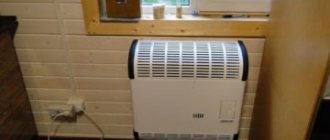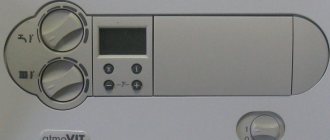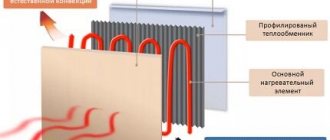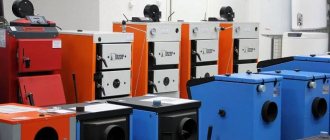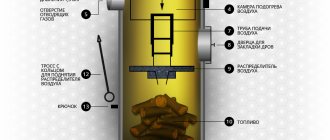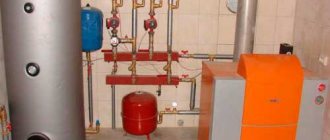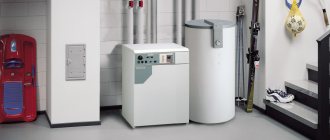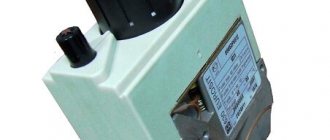In terms of practicality and cost, liquid fuel boilers are somewhere between solid fuel and gas. They still require space to store fuel and tanks for it, and are still not completely autonomous due to the need for regular maintenance. At the same time, liquid fuel boilers do not require a large number of documents and, on average, have a higher efficiency than their gas counterparts.
However, liquid fuel boilers are chosen mainly due to the availability of a stable source for purchasing this fuel at a lower price. In the article we will look at liquid fuel options, what their consumption is, how economically profitable they are and where to get them, and also give an example of the most successful boiler models.
Types of liquid fuel for boilers
In domestic conditions, in more than 80% of cases, diesel fuel (diesel fuel) is used as liquid fuel. Accordingly, it is burned by universal gas-diesel boilers or specialized diesel boiler units. In addition to wholesale purchases, you can find diesel fuel at a lower price from agricultural enterprises, tractor drivers, truck or bus drivers.
In almost all instructions for boiler units, the manufacturer indicates fuel requirements; for 2022, the standard is fuel with a viscosity of up to 6 mm2/s at 20°C. In Europe, this is a common fuel for heating private houses under the marking EL DIN 51603; in Russia, its closest analogue is the Euro-4 standard.
From the instructions for De Dietrich NeOvo EcoNox liquid fuel.
It is easiest to determine the approximate consumption of diesel fuel by a boiler, since it is known that 1 liter of Euro-4 fuel, when burned in a modern boiler with an efficiency of 90-95%, produces 1 kW of thermal energy (+-5%). As a result, the consumption of diesel fuel by the boiler = Nominal power of the boiler (kW) / 10 is the hourly consumption when operating at maximum power; in practice, the boiler is active for an average of 1/3 of the day.
For example, with a power of 24 kW, the maximum consumption is 24/10 = 2.4 l/h. In practice, this will be about 0.8 l/h - this is the most accurate generalized calculation method. Calculate the real indicator without individual initial data such as the degree of insulation of the house, temperature requirements, weather conditions, fuel quality, etc. impossible. However, it will differ slightly from the theoretical one.
Less common diesel alternatives are:
- Used oil . Much cheaper, but almost equally calorific fuel. It can be purchased for a completely symbolic price from service stations and auto repair shops, agricultural enterprises, any type of vehicle fleets, factories, and railway depots. However, the initial cost of household boilers that burn waste is extremely high (usually from 100 and even 150 thousand rubles), and due to the low environmental friendliness of the raw materials, the boilers require regular maintenance.
- Fuel oil . A more expensive analogue of mining, fuel oil of the M100 and M40 grades is most often used as fuel for heating. It is burned in heating boilers running on waste oil; it is not economically justified on a domestic scale.
- Light heating oil . Similar to diesel fuel, but since heating oil is not used in cars, requirements such as cloud point, cetane number, etc. are not observed during its production. In view of this, the price for it is on average 5% lower - 43-46 thousand rubles / ton, when diesel fuel is 45-49 thousand rubles / ton.
- Kerosene . Boilers capable of burning it are extremely rare; usually these are models that run on waste and fuel oil. It has only 5-8% higher calorific value, but costs on average 75-95 thousand rubles/t.
- Rapeseed oil . An alternative to diesel fuel, several times cheaper in cost. However, there are very few diesel boilers running on rapeseed oil, and it is extremely difficult to obtain raw materials, unless you own a rapeseed field.
Selection of fuel storage containers
Organization of the boiler room space with a plastic container for storing fuel indoors.
To store liquid fuel, even with a boiler of the lowest power, special containers are needed. They can be made of steel, stainless steel or aluminum, but today plastic is most often used - durable, lightweight and resistant to temperature changes on average from -50°C to +50°C. According to SNiP, in the boiler room it is permissible to place a container with a volume of up to 0.8 m3 (800 l), at a distance of more than 1 m from the burner. If the volume is larger, the tank must be placed behind a blank wall or outside.
When storing outdoors, it is worth considering the need for an additional pump; the characteristics of the standard pump are usually indicated in the instructions, and you should rely on them. Also, the external part of the pipeline must be insulated in accordance with the type of fuel used. For example, the viscosity of diesel fuel changes significantly at +5°C and below, and fuel oil solidifies on average at +10°C.
It is advisable to store fuel for no more than a year, and it is most profitable to stock up for the entire heating season, so for the first time you need to calculate the approximate consumption for the entire season. Further, the amount of fuel consumed will be known thanks to the practice of the past heating season.
Advantages of fuel briquettes
The main advantage of briquettes is that the combustion temperature is 1.5-2 times higher than that of firewood. At a humidity of 20%, the calorific value of wood is 2500-2700 kcal/kg, briquette - 4500-4900 kcal/kg.
And there are simple and logical explanations for this:
- Briquettes have low humidity. The lower the humidity of the firewood, the higher its heat transfer. Normal wood moisture content when properly stored is 15-20%. For briquettes, the humidity is 4-8% and is achieved through forced drying - a mandatory stage in their production.
- Briquettes have a high density
. Why does oak firewood burn hotter than poplar wood? Because of the density. The density of oak is 0.81 g/cm3, poplar is 0.4 g/cm3. That is, each cm3 of oak contains more useful and combustible woody matter than poplar. Briquette density is 0.95-1g/cm3. Their combustible content per unit volume is even higher than that of oak. Accordingly, the calorific value is higher.
Low humidity and high density are the key to the success of briquettes. If you dry firewood to a moisture content of 4-8%, then its calorific value will be comparable to briquettes.
Other advantages of briquettes:
- Take up less space.
- Burn more evenly and longer.
- Made from waste. If you care about the environment and the environment.
- Due to low humidity, briquettes emit less soot and pollute the chimney less.
- How to clean soot from a chimney? Simple ways to remove soot from a chimney at home.
- Does the firewood burn poorly and there is a burning smell in the room? Read these reasons for backdraft in a chimney.
Design and principle of operation
Liquid fuel boilers are both single-circuit and double-circuit, but exclusively energy-dependent models, the operation of which requires a connection to the electrical network. In fact, liquid fuel models differ from gas models only in the burner, which is adapted to the characteristics of a particular type of fuel and is equipped with a turbocharger necessary to spray the fuel throughout the combustion chamber. Any type of liquid fuel requires preheating, which is also carried out in the burner, all this makes it so massive and large-sized.
The rest of the operating principle is standard:
- Fuel from the reservoir is supplied to the burner heating chamber, then atomized using a nozzle and ignited in the combustion chamber.
- Above the combustion chamber there is a heat exchanger, which heats up and transfers thermal energy to the coolant located inside (often all the walls of the combustion chamber are a heat exchanger).
- The coolant (usually water) circulates through the system giving off heat to the heating radiators.
There are also models with a different structure and operating principle; we have already described them in a more detailed analysis of diesel boilers and boiler units that burn waste oil:
All the details you need to know about diesel boilers for heating a private home
All the details you need to know about waste oil boilers for a private home
How to make efficiency high
There are many methods for increasing the efficiency of solid fuel equipment. Each of them helps to increase this parameter from 3 to 7%.
The most effective ways:
- Using quality fuel. If possible, it is necessary to use only dry and high-quality raw materials for heating the room.
- Regular removal of ash. If it is not possible to purchase expensive, high-quality fuel, it is necessary to clean the chimney more often.
- Ventilation of the room. Since the combustion process occurs in the middle part of the unit, it is necessary to ensure a stable flow of fresh air into the room where the equipment will be located.
- Reducing heat loss. If a residential building gives off heat faster than it heats up, purchasing higher quality fuel or even new boiler equipment will not give the desired result. Therefore, it is necessary to insulate the living space, install new windows made of wood or plastic, and reliable doors.
- Installation of auxiliary devices. To heat the house evenly, you need to use a circulation pump. This method is very effective and helps increase efficiency. If the old unit does not cope with the task of heating the house, then you can purchase an inexpensive boiler and install it in a cascade. Additional equipment can be used when the old one alone cannot cope with the heating task. You can find out Vilo pumps for heating at the link.
Reviews of household liquid fuel boilers: advantages and disadvantages
| Advantages | Flaws |
| Reliability - liquid fuel boilers, especially if they are expensive European models, are durable and trouble-free | The use is not always justified in economic terms. Diesel models have high fuel costs, and used oil models themselves are extremely expensive. To obtain benefits, you need to comply with many conventions. |
| Operating costs – almost any type of fuel can be obtained at a fairly low cost, especially used oil | Energy dependence - due to forced-air burners, all liquid fuel models require connection to the electrical network |
| Autonomy - after starting and setting up the boilers practically do not require human intervention throughout the entire season | The operation of burners and boilers in general is quite noisy, but the owners note that the noise is not audible even behind the thin walls of the boiler room |
| Availability of both single-circuit and double-circuit models | The need for good ventilation, according to reviews from the owners - forced, natural - does not relieve the room from the constant smell of fuel |
| Almost all models are equipped with a standard list of protection systems | |
| No permission required for connection and installation |
Differences from the rear chimney
The exhaust gas exhaust system of a horizontal (coaxial) configuration is mounted on boilers with a closed combustion compartment. Straight chimneys are combined with a fan unit and a forced-operation pressure pump. The main difference from the upper analogues is the horizontal placement of the outlet end on the street. Such structures are mounted on a heating boiler using an elbow, and are led out through the wall ceiling or roof to the side.
The upper chimney consists of a pair of round elements located inside each other, characterized by internal and external diameters.
Smoke is removed through a smaller cross-section pipe, and the outer part serves to suck in fresh air masses with further entry into the boiler.
Minimum required power
An accurate calculation of the boiler's heating output is carried out by a heating engineer based on SNiP 2.04.01-85. However, in domestic conditions, for an average uninsulated or weakly insulated house with a masonry of 2 bricks and a ceiling height of 2.7 m, the minimum required power is calculated from the rule of 1 kW per 10 m2, we also recommend laying a 20% reserve.
For example, for the house described above with an area of 150 m2, the minimum required power of an oil-fuel boiler will be (150/10) * 1.2 = 18 kW.
Upper chimney design
A simple vertical system for solid fuel boilers is assembled without stepped sections or horizons. In difficult cases, deviations and straight inlays no longer than 1 m, laid with a slight slope, are allowed.
In such configurations with branches, an accelerating segment is introduced to start the traction. In this case, the heating structure is connected vertically or horizontally.
Discharge pipes start from the boiler, length - at least 1 m, connect a direct adapter for input. Failure to comply with these recommendations causes a lack of traction. The deficiency is compensated by increasing the height of the entire structure.
Upper chimney installation.
The best known manufacturers and models: characteristics and prices
Kiturami Turbo 13R
The most common and one of the best liquid fuel boilers for heating a private home in the budget price category. This is a diesel double-circuit model, the primary heat exchanger is steel, the secondary (for hot water supply) is copper. The fuel consumption of the 13 kW model is 1.97 kg/hour (2.25 l/hour), quite average, but sufficient. In general, the model is characterized by the minimum required set of components and the minimum required operating efficiency, due to which it is possible to maintain one of the lowest prices on the market.
At the same time, the boiler is known for its reliability and trouble-free operation. Separately, it is worth noting the functionality; for this price, the basic package includes a room thermostat - an extremely useful device that affects not only comfort, but also savings. There are all the minimum necessary protective systems and auto-diagnostics. Available in 13, 17, 21 and 30 kW versions.
Ferroli ATLAS 32
Universal Italian boiler with replaceable burner (diesel gas). Known for its high reliability, cast iron heat exchanger and efficiency of 94.3%. Users like to note the extremely quiet operation of an oil-fired boiler. There is protection against overheating and freezing, it is possible to connect an external thermostat, but it is not included with the boiler.
The only drawback is the lack of low-power models. Available in versions with heating outputs of 32, 47, 62, 78 and 95 kW. Please note that it is usually sold without a burner, which must be purchased separately. Diesel fuel – SUN G burner, gas – SUN M burner.
ACV N3
Another universal gas-diesel model made in Belgium. A diesel burner here also needs to be purchased separately; burners BMR 31, BMV 1FV, BMV 2FV can be installed on this model. Unlike the previous Ferroli, here the heat exchanger is made of furnace steel, however, based on the experience of other models, even steel heat exchangers from ACV have never had any questions, as with all boilers in general. The manufacturer is known for the practicality and absolutely trouble-free boiler units. However, the price is corresponding, in our opinion, too high; if the budget is strictly limited, this model is not the best choice.
There are protections against overheating, lack of traction, low-temperature corrosion, there is a connector for external control, but the thermostat itself is not included in the basic configuration. The body is thermally insulated; owners note the low noise level of the burners.
NORTEC B70 (WB 40)
Domestic model that burns waste oil. Despite the low cost for boilers of this type, the amount is still significant and will only pay off when used in a large private house (from 300-400 m2) with permanent residence; purchasing such equipment for a summer residence with temporary residence is irrational. In addition to mining, it is capable of burning fuel oil, heating oil and even crude oil. The 40 kW model consumes up to 4 l/hour of fuel.
From the factory, the boiler is already equipped with all the necessary components of the fuel unit - a transfer pump, a disposable fuel filter and a fuel intake. Equipment of this type uses extremely wear-resistant and durable materials that do not raise questions about reliability. In this model, the automation is equipped with the minimum necessary functionality: a basic set of protection systems and the ability to set the temperature in the system. Due to its simplicity, there are also no problems with it.
Cost: 146,000-175,000 rubles.
What types of fuel briquettes are there?
Briquettes differ in shape and material of manufacture.
Differences in shape
There are three main forms of fuel briquettes: pini-kei, roof and nestro. Their difference is only in the maximum density that can be achieved in each form. There are no differences between European firewood in terms of chemical composition or mass calorific value.
Fuel briquettes pini-kay
The highest density is from 1.08 to 1.40 g/cm 3 . Section shape - square or hexagon. There is a through hole in the center, which provides better air movement and combustion of the briquette.
Fuel briquettes RUF
Fuel briquettes made from roof sawdust, in the form of a brick. They have a small size and the lowest density - 0.75-0.8 g/cm3.
Briquettes Nestro
Fuel briquettes have a non-stro cylinder shape and an average density of 1 - 1.15 g/cm3.
Peat briquettes
Peat fuel briquettes have a special shape, unlike others. And due to the high ash content and the presence of other harmful impurities in the composition, they are not recommended for use at home. Such briquettes are suitable for industrial furnaces or boilers that can operate on low-quality fuel.
Peat fuel briquette
Differences in material
Euro firewood is made from sawdust, seed husks, rice and buckwheat, straw, tyrsa, peat and other materials. The material affects the calorie content of the fuel briquette, ash content, amount of soot emitted, quality and completeness of combustion.
Below in the table is a comparison of the characteristics of briquettes made from different materials - seed husks, rice, straw, tyrsa and sawdust. Such an analysis shows not only that briquettes made from different materials differ from each other. But also the fact that even briquettes from the same material differ in quality and properties.
All data is taken from real test reports of fuel briquettes.
Calorie content, humidity, ash content and density of fuel briquettes made from different materials.
Comments on the table
Seed. The highest calorific value of briquettes made from sunflower seeds husks is 5151 kcal/kg. This is due to their low ash content (2.9-3.6%) and the presence of oil in the briquette, which burns and has energy value. On the other hand, due to the oil, such briquettes pollute the chimney more intensively with soot, and it has to be cleaned more often.
Tree. In second place in terms of caloric content are wood briquettes made from sawdust - 5043 kcal/kg at 4% humidity and 4341 kcal/kg at 10.3% humidity. The ash content of wood briquettes is the same as that of a whole tree - 0.5-2.5%.
Straw. Straw briquettes are not much inferior to sunflower seeds or sawdust and have good potential for use. They have a slightly lower calorie content - 4740 kcal/kg and 4097 kcal/kg, and a relatively high ash content - 4.8-7.3%.
Tyrsa. Tyrsa is a perennial herbaceous plant. Such briquettes have a fairly low ash content of 0.7% and good heat transfer of 4400 kcal/kg.
Rice. Briquettes made from rice husk have the highest ash content - 20% and low calorific value - 3458 kcal/kg. This is even less than wood at 20% humidity.
Prices: summary table
| Model | Available power, kW | Number of circuits | Efficiency, % | Cost, rub. |
| Kiturami Turbo 13R | 13, 17, 21, 30 | double-circuit | 86 | 43 000 |
| Ferroli ATLAS 32 | 32, 47, 62, 78, 95 | single-circuit | 64,3 | 63 000 |
| ACV N3 | 16, 25, 30, 51 | single-circuit | 90 | 93 000 |
| NORTEC B70 (WB 40) | 40, 59, 147, 197 | single-circuit | — | 159 000 |
DieselLiquid fuel BoilersWaste oil

